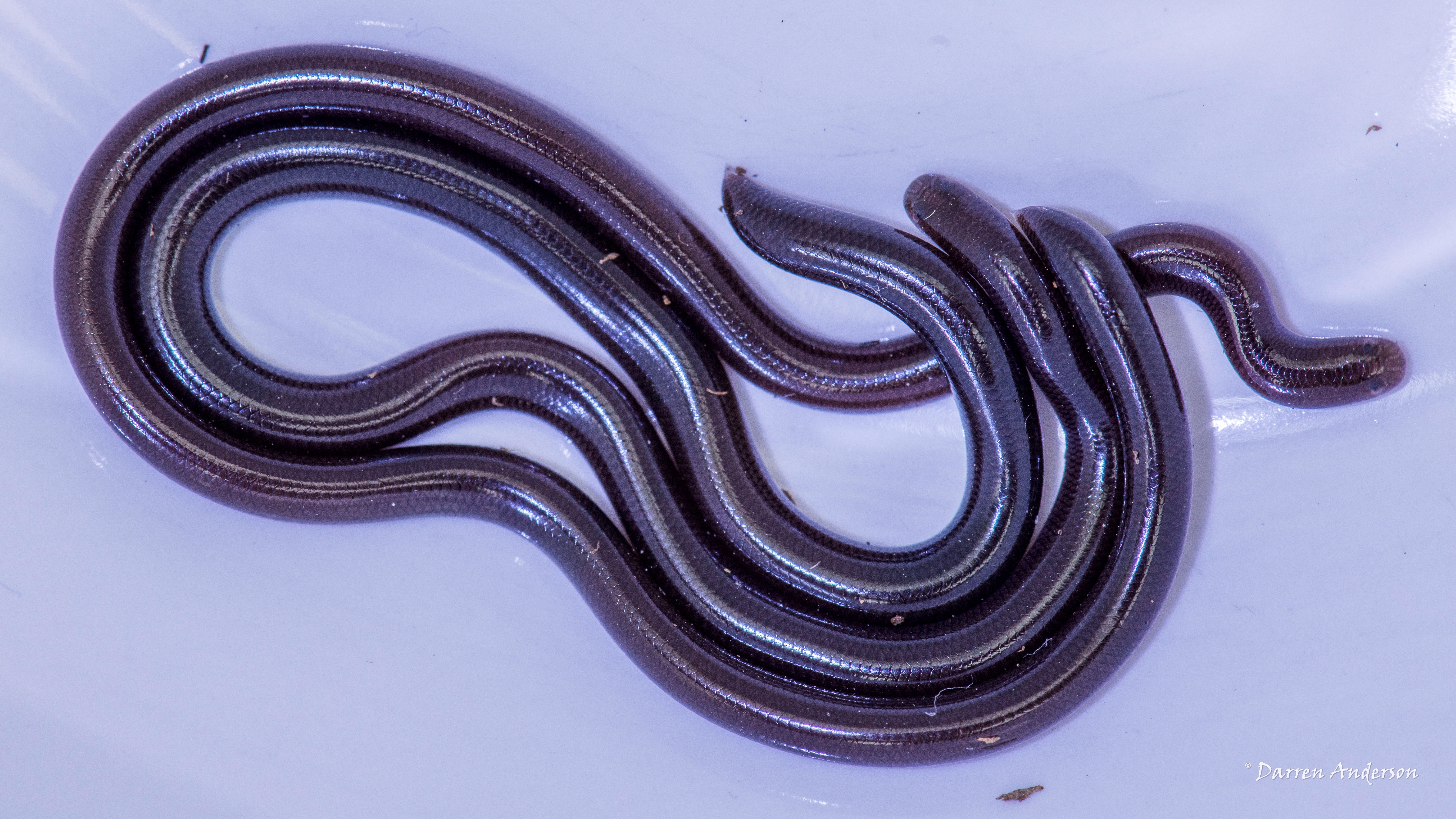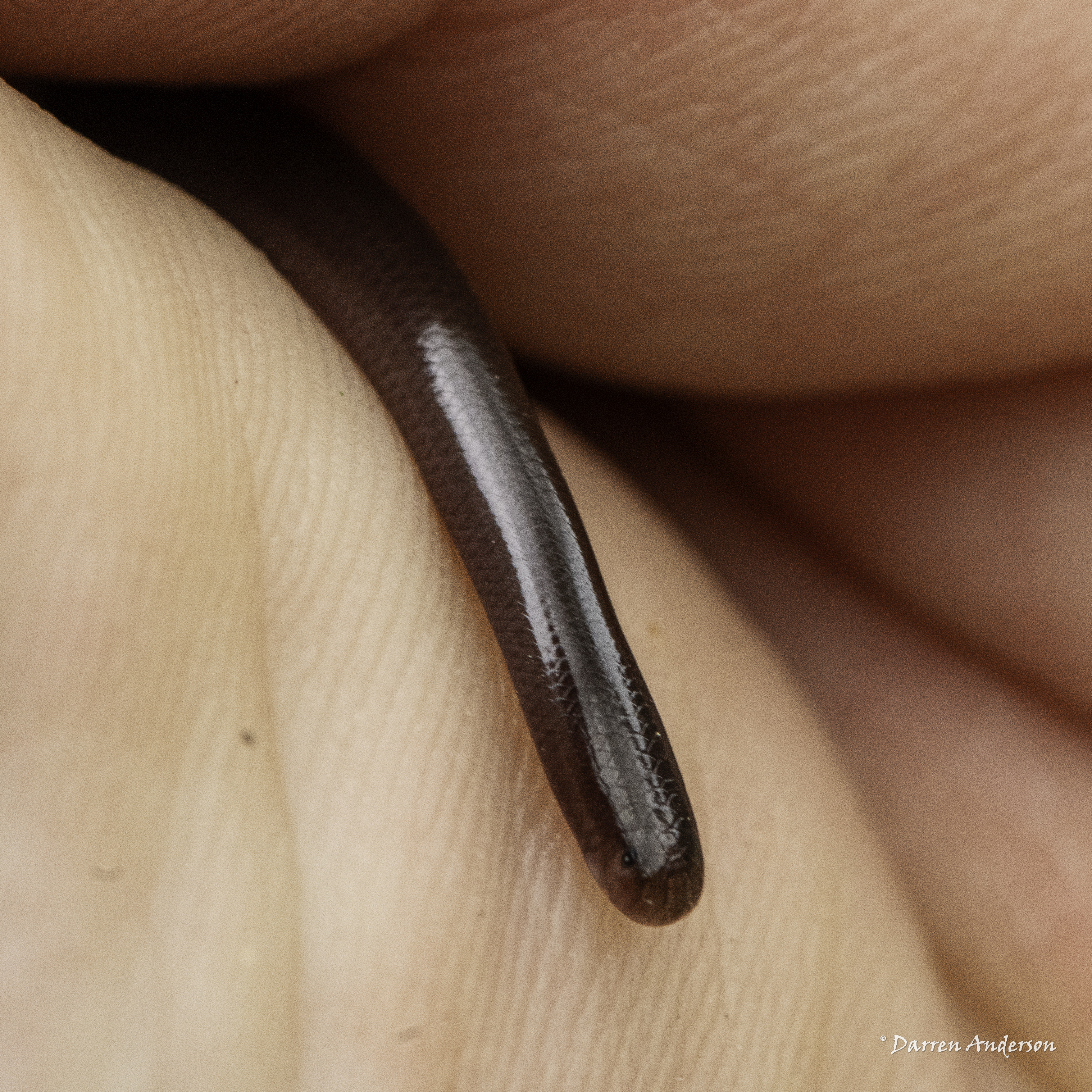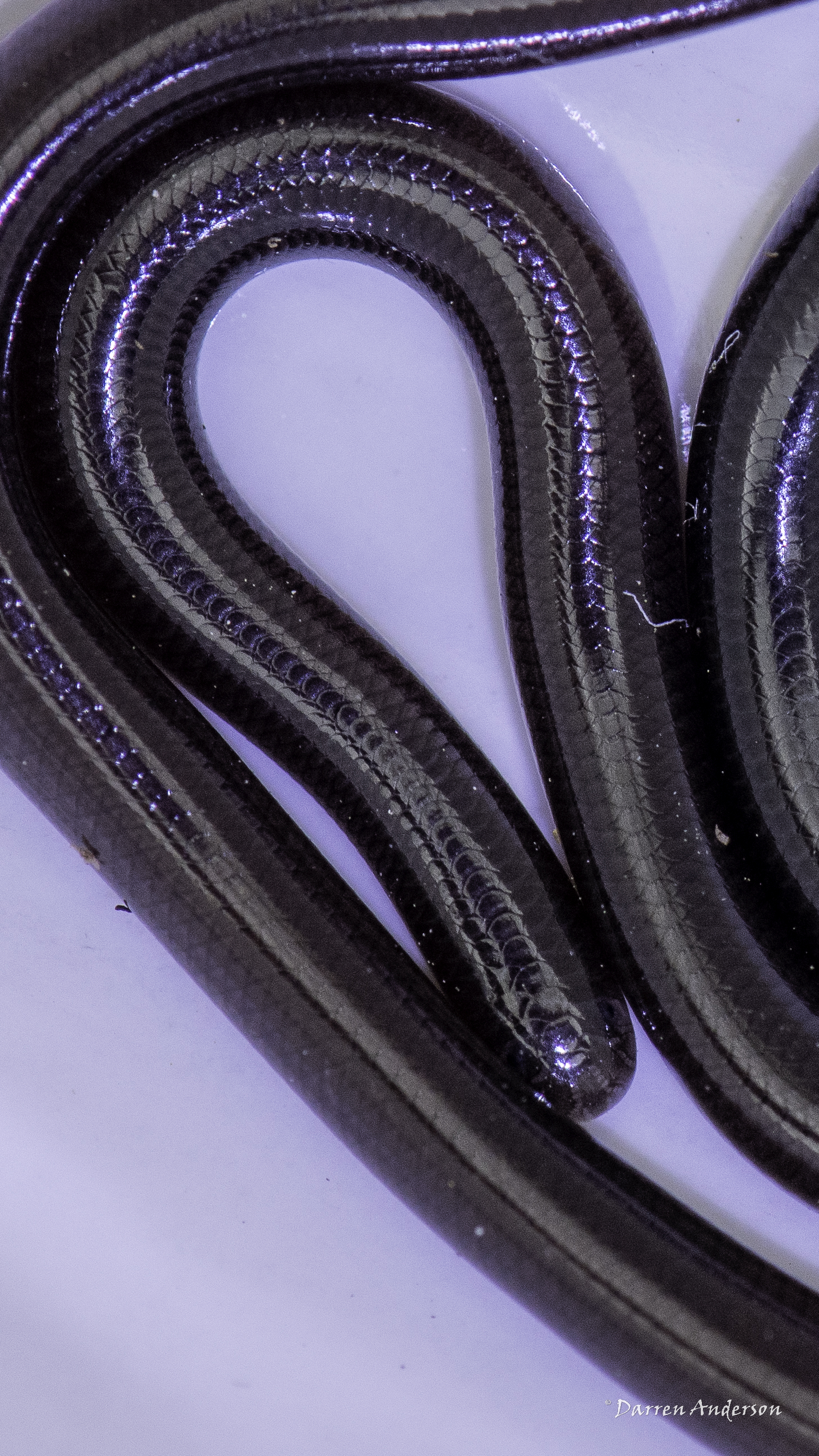Brahminy Blindsnake (Indotyphlops braminus)
The Brahminy blindsnake (Indotyphlops braminus) is a fascinating creature despite its small size and relatively inconspicuous nature.

These small, secretive snakes are native to the tropical and subtropical regions ranging from East Africa to Southeast Asia. One of the most intriguing aspects of the Brahminy blindsnake's life history is its inadvertent introduction to various parts of the world. These snakes have been unintentionally transported to new regions through the global trade of plants and soil. They often hitch a ride in potting soil, which is shipped internationally for gardening and landscaping purposes. As a result, Brahminy blindsnakes have been introduced to many regions outside their native range, including Africa, Australia, the Americas, and islands in the Pacific and Indian Oceans. They are typically found in diverse habitats such as forests, grasslands, gardens, and urban areas.

These snakes are small, typically ranging from about 2.5 inches to 4.5 inches in length, although some individuals may grow slightly larger. They have cylindrical bodies with smooth, shiny scales and are usually dark brown or black in color, sometimes with a reddish tint. Brahminy blindsnakes have tiny eyes that are covered by scales, hence their name, as they are effectively blind. A key indicator that distinguishes these snakes from the native threadsnakes of Arizona is the rostral scale on the nose of the snake that has broken lines on its edges, giving it the appearance of having ‘stitches’ on its nose.

Another fascinating aspect of this species is that this snake is the only parthenogenic snake in the world. This means these snakes have the ability to reproduce through parthenogenesis, which is a form of asexual reproduction where a single female reproduces without fertilization. Offspring born are always female, making the entire population of this species female. This reproductive strategy allows a single female to establish a new population in a new area without the need for a mate.
The accidental introduction of Brahminy blindsnakes to new regions can have ecological consequences. In some areas, they may compete with native species for resources or prey on local invertebrates, potentially disrupting native ecosystems. Their ability to reproduce parthenogenetically further enhances their potential to rapidly establish populations in new areas.
Brahminy blindsnakes generally have minimal interaction with humans due to their burrowing habits and secretive nature. While they are harmless to humans and can even be beneficial by controlling pest populations, they are sometimes mistakenly feared or killed due to misunderstanding.
The Brahminy blindsnake is not considered endangered or threatened and, as an introduced species, likely will not receive specific conservation attention in regions where they are not native.


